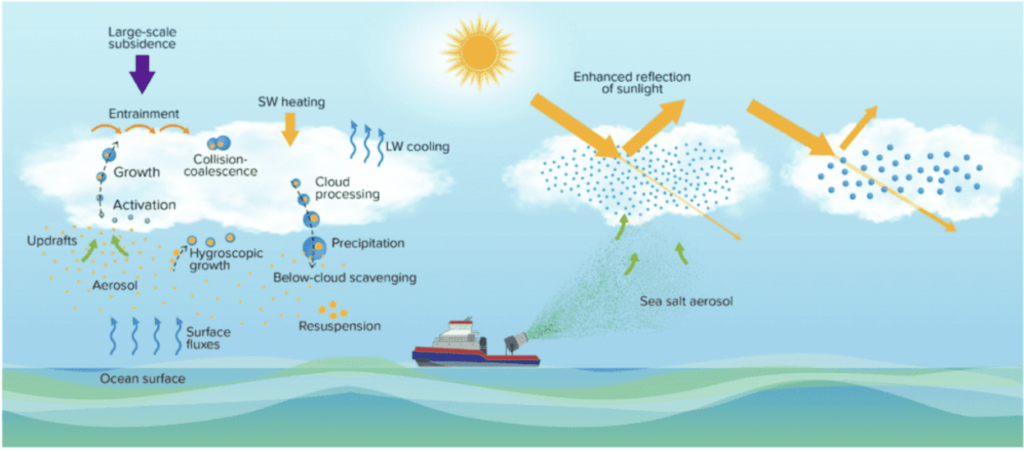Scientists Detail Research to Assess Viability and Risks of Marine Cloud Brightening
Posted
Last Updated
As the levels of greenhouse gases in the atmosphere continue to increase and climate change impacts become more costly, the scientific community is redoubling efforts to investigate the potential risks and benefits of artificially shading Earth’s surface to slow global warming.
Marine cloud brightening (MCB) is one of two primary solar radiation modification methods being proposed to offset the worst effects of global warming while decarbonization advances. MCB proposals involve the injection of salt spray into shallow marine clouds to brighten them, increasing their reflection of sunlight and reducing the amount of heat absorbed by the water below.
A group of 31 leading atmospheric scientists have now offered a consensus physical science research roadmap to build the knowledge base needed to evaluate the viability of MCB approaches.
“Interest in MCB is growing, but policymakers currently don’t have the information they need to reach decisions about if and when MCB should be deployed,” said lead author Graham Feingold, a researcher with NOAA’s Chemical Sciences Laboratory. “The question is whether we can design a MCB research program using our current modeling and observational tools to establish the feasibility of this approach on a global scale, and if not, what needs to be done to position ourselves to do so.”
Artificially shading the planet would do nothing to reduce the driver of climate change, human-caused greenhouse gas emissions, said co-author Lynn Russell, a climate scientist at the Scripps Institution of Oceanography at the University of California San Diego. “The recent acceleration of impacts from global warming means that we need to consider non-ideal backup plans just to buy us enough time to reduce greenhouse gas emissions and existing burdens,” Russell said.
read more at research.noaa.gov.

